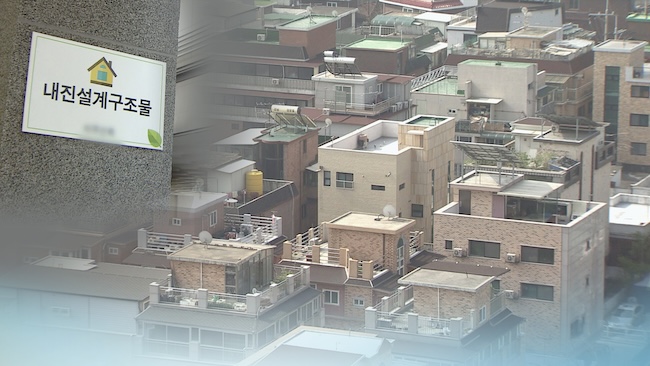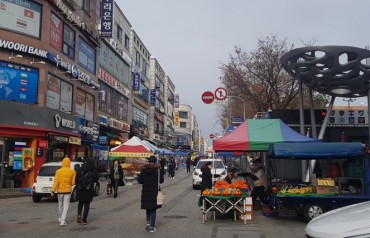
It is concerning to note that only 10 percent of the buildings in the province are equipped with earthquake-resistant features. (Image courtesy of Yonhap)
CHUNCHEON, Oct. 26 (Korea Bizwire) – Since the beginning of this year, the coastal region of Gangwon Province along the East Sea has experienced a total of 84 seismic events, including both large and small earthquakes.
This increased seismic activity has elevated the risk of structural damage. However, it is concerning to note that only 10 percent of the buildings in the province are equipped with earthquake-resistant features.
According to data from the Ministry of Land, Infrastructure, and Transport (MOLIT), as of the end of June, only 16.4 percent of the 6,175,659 buildings subject to seismic design nationwide meet seismic performance standards.
In Gangwon, a mere 12.9 percent, equivalent to 45,821 buildings out of 355,584 subject to seismic design, have earthquake-resistant features. This places Gangwon as the fifth province or major metropolitan area in terms of seismic preparedness, trailing behind South Jeolla Province (10.6 percent), North Gyeongsang Province (11.7 percent), Busan (12.2 percent), and South Gyeongsang Province (12.4 percent).
In the East Sea, this year alone has witnessed 20 earthquakes with a magnitude of 2.0 or higher, with a total of 84 earthquakes, including “microquakes” registering below 2.0 in magnitude.
Notably, in May, a 4.5-magnitude earthquake struck 59 kilometers northeast of Donghae, Gangwon Province, leading to numerous reports from residents to fire authorities. This event marked the most significant earthquake on the Korean Peninsula and its surrounding waters this year.
Despite this consistent seismic activity, the earthquake-resistant design standards for buildings in the area remain largely unmet. Consequently, there is a growing demand for effective countermeasures.
The Ministry of the Interior and Safety initiated a seismic reinforcement support project for private buildings last year to improve the earthquake resilience of structures. However, as of last month, there had yet to be a single application for financial support for construction costs under this initiative.
The project primarily targets multi-use buildings with a total area exceeding 1,000 square meters, such as cultural, religious, and tourist accommodation facilities, given their priority for reinforcement among private buildings. It offers a 20 percent subsidy for seismic construction costs, with the government contributing 10 percent, and local governments providing the remaining 10 percent.
Yong Hye-in, a legislator belonging to the National Assembly’s Public Administration and Security Committee, who requested relevant data, attributed the lack of progress in the private building seismic reinforcement project to the inadequacy of support in comparison to actual construction costs.
J. S. Shin (js_shin@koreabizwire.com)






